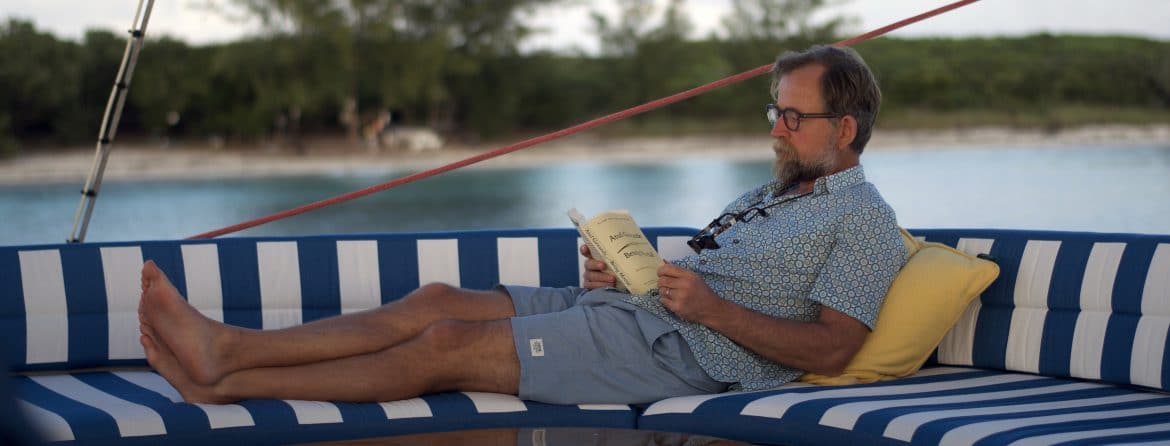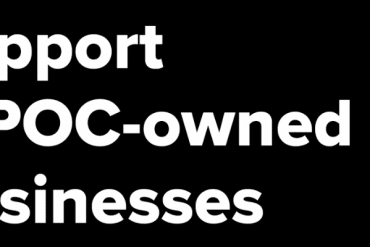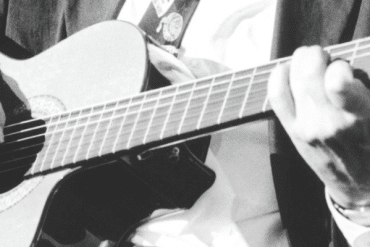Exploring the mind of lifelong summer resident John Johnson.
 At fifty-one years old with a thick beard and inquisitive eyes, John Johnson has a sage air about him. He props himself gingerly on a stool in his barn at the Almanack Arts Colony, which was co-founded by his sister India Blake. “Tweaked my back surfing,” he sighs. For the last two weeks, Johnson and his wife and children were sailing around the Abacos where they made stops to surf and free dive. If you emailed him during that time, his automatic reply read: “Greetings from off the grid…For the next two weeks, I’ll be under sail or underwater, possibly even under the influence, and checking email once a week at best.” Even his email was intriguing.
At fifty-one years old with a thick beard and inquisitive eyes, John Johnson has a sage air about him. He props himself gingerly on a stool in his barn at the Almanack Arts Colony, which was co-founded by his sister India Blake. “Tweaked my back surfing,” he sighs. For the last two weeks, Johnson and his wife and children were sailing around the Abacos where they made stops to surf and free dive. If you emailed him during that time, his automatic reply read: “Greetings from off the grid…For the next two weeks, I’ll be under sail or underwater, possibly even under the influence, and checking email once a week at best.” Even his email was intriguing.
The great-grandson of Johnson & Johnson founder Robert Wood Johnson and the son of artist John Seward Johnson, who is world-renowned for his massive sculptures, John S. Johnson III successfully carved out a name for himself in his own right. He’s a modern-day Renaissance man, writing screenplays, developing a coastal town in Costa Rica, supporting an artists’ colony on Nantucket and launching successful tech companies, most notably BuzzFeed.
 As a former Henry Crown Fellow at the Aspen Institute with a master’s degree from Columbia in research methodology and quantitative methods, Johnson engages in conversation like he’s conducting a symphony, playing all the parts of the listener’s brain. Here in his barn, where next month he’ll host the sixteenth annual Screenwriters Colony, Johnson weaves together another impromptu opus, sharing his thoughts on his family, on Nantucket, and on his many endeavors.
As a former Henry Crown Fellow at the Aspen Institute with a master’s degree from Columbia in research methodology and quantitative methods, Johnson engages in conversation like he’s conducting a symphony, playing all the parts of the listener’s brain. Here in his barn, where next month he’ll host the sixteenth annual Screenwriters Colony, Johnson weaves together another impromptu opus, sharing his thoughts on his family, on Nantucket, and on his many endeavors.
N MAGAZINE: Where does Nantucket fit in the fascinating matrix of your life?
JOHNSON: And by “fascinating” you mean meandering, hilariously spacey and frequently awkward, correct? I don’t have as much history here as a lot of people, but it was a place of escape for my grandfather who would sail here from Chatham. My parents met on a plane bound for Nantucket— fogged out, of course—which is how they got to know each other. So I possibly owe my existence to Nantucket’s fog! Nantucket is more home to me than anyplace else. I’ve always thought that if I got bumped on the head and developed amnesia, Nantucket is the first place I’d remember.
N MAGAZINE: Given the impressive array of historical accomplishments in your family, did you find it difficult to define yourself in your own right?
JOHNSON: Living in a shadow requires feeling external pressures. My parents, especially my mom, were relentless in reinforcing the idea that I could do anything I set my mind to. They had incredible faith in me. Maybe they had the burden of a family legacy in mind, but I also think they were reacting to the fact that I really struggled when I was a kid and was deeply unhappy in school, basically until college. They had this skinny, nerdy, dreamy kid who was not fitting in and feeling down on himself. Their strategy was to reinforce the idea that I’d have options, with a lot of love, but also through brute force of repetition. There was also a sense instilled in me that as someone who by sheer luck and cosmic roll of the dice had started with all of these resources, I had a responsibility to give back within the parameters of being true to myself.
N MAGAZINE: Your father quite literally cast an enormous shadow with his larger-than-life sculptures. What influence did he have on you?
JOHNSON: My dad is the most flexible thinker I know. Most people go through life profoundly attached to their preferred mental models of the world. But being around my dad, I would just see him flip perspectives all the time. I remember we were on a father-son trip to DC. We stopped at the Vietnam and Korean War memorials, and then we paid a visit to his monumental sculpture, “The Awakening,” which is this massive giant—his arm and hands forty feet tall—coming out of the earth. As we approached the piece, I saw that someone had spray painted graffiti on it. I exclaimed and pointed at it. My dad’s response was: “I know…Isn’t it great?” My head exploded. He loved the idea of someone actively responding to his art. Being around my dad would frequently lead to those head exploding moments.
N MAGAZINE: You’re involved in so many endeavors; how do you define what you do?
JOHNSON: When people asked me what I do, I usually just talk about whatever I’m working on the most at that particular time. Having crossed the fifty-year mark and making time for more introspection, I feel like a deeper layer of understanding of what I want to accomplish is emerging. A while ago, I was thinking back to the origin of many of these projects. At first I thought that they were addressing frustrating problems in need of solutions. But over the last decade, I’ve come to see that all the projects relate to a kind of “cultural arbitrage,” for lack of a better term. They are all related to an imbalance of value created by assumptions, by the way we think about things, our mental models of the world. I’m especially struck by services or products that are aiming at me, but not reaching me. Businesses out there that have seen that cultural arbitrage opportunity and refreshed their assumptions about the world, like Airbnb and BuzzFeed, have done pretty well.
 N MAGAZINE: Can you explain this “cultural arbitrage” in the case of BuzzFeed, which you co-founded in 2006?
N MAGAZINE: Can you explain this “cultural arbitrage” in the case of BuzzFeed, which you co-founded in 2006?
JOHNSON: With BuzzFeed—and I have to give the credit to my co-founder Jonah Peretti who first saw this—it was seeing that the old mental models of news dictated a need for a kind of “seriousness.” Get out your pipe, open up the paper and block out the family. “Don’t interrupt dad, he’s reading the paper…” But what people our age and younger really wanted was a single place for everything, all of their content. That was the undervalued thing in the “how you get your information” mental model, having the stuff you love, all together in one place. BuzzFeed has an audience of over 300 million now, with 57 billion views in 2017, just on Facebook— so there is arguably some confirmation that this experience has value for people.
N MAGAZINE: What’s your main focus now?
JOHNSON: My main focus now is HarmonyLabs, which is targeting a flawed model for understanding how media influence works. I was seeing how much money was being spent on media to win hearts and minds, despite nobody having more than intuition about how hearts and minds are won. I’m not putting down intuition— you can now shift a presidential election if your intuition about media influence is sharp enough—but as a society we need to get our arms around this, and not just be subjected to it. We need to expand our shared human knowledge into this realm and that means building the tools to really study it.
 N MAGAZINE: What have you learned about media influence, especially as it relates to the last election?
N MAGAZINE: What have you learned about media influence, especially as it relates to the last election?
JOHNSON: The reality is we are in a full-blown information war, and that is a wake up call to those of us in media and to our intelligence community, as well, who were also caught on their back foot to say the least. But a wake up call to do what? We know Russian hackers are now attacking our power grid, so that is a wake up call to address vulnerabilities there, perhaps to decentralize our power and make it more resilient, certainly to beef up electronic security.
But what do we do when our information systems—which are crucial, I might add, to keeping people informed and to maintaining a democracy—are attacked? The fact is that we don’t know. Academic media researchers don’t know. The most talented advertising and Hollywood storytellers don’t know. In the deepest bowels of the Pentagon and our intelligence agencies, they don’t know the answer either.
The reality today is that while we understand generally a lot of ways to influence people through messaging, we really don’t understand in a holistic way how messaging works on us. Yes, there are studies that give us narrow insight and some of it is really good. But to adequately defend yourself against a threat to a system, you have to understand the system itself and we just don’t understand how society and media interact at scale.
N MAGAZINE: Are you developing ways to defend democracy at Harmony Labs?
JOHNSON: So when I get burned out of the defending democracy stuff, which gets pretty dark at times, I focus on the aspirational element. We’re getting to tackle the last great problem in communications science. What does that look like in actual practice? One research group is tracking memes, contagious ideas, from the far right and far left and tracking them into their spawning grounds on the internet. From there the idea is that we may be able to build a taxonomy out of those diffusion patterns and be able to recognize a powerful meme as it is taking off. If that meme is based on misinformation or disinformation as many of them are, those can be targeted for debunking before they influence millions of people.
 N MAGAZINE: Another one of
your big focuses is Nosara, a coastal community in Costa Rica where many Nantucketers now spend their winters. You opened the Harmony Hotel back in 2004 and have since started a pretty significant project to ensure sustainable development in that area. Can you explain the opportunity you see down there?
N MAGAZINE: Another one of
your big focuses is Nosara, a coastal community in Costa Rica where many Nantucketers now spend their winters. You opened the Harmony Hotel back in 2004 and have since started a pretty significant project to ensure sustainable development in that area. Can you explain the opportunity you see down there?
JOHNSON: Nosara is at a wonderful place at an early stage of growth—a place that Nantucket resembled close to three hundred years ago. There is an opportunity to take a crack at solving the downside of rising property values while it’s a $50 million problem instead of a $50 billion problem. That means conservation, affordable housing, access to capital for small businesses and smart water management. The community’s solution was formed from working backwards from a vision of the place we all wanted to see in twenty years. Ticos [native Costa Ricans] and gringos, wealthy and lower income, are designing backwards from a vision of success. That means abandoning a lot of old models for getting stuff done, both on the conservation side and on the real estate development side. It’s meant a lot of stitching together of various groups: a double bottom line real estate fund, micro lenders, green development companies for built environments, conservation, hospitality and, of course, government, because you can’t just build a jewel box model—then everyone just builds up to your boundary. You need smart zoning to protect that future state.
 N MAGAZINE: How are you executing your long-term vision for Nosara?
N MAGAZINE: How are you executing your long-term vision for Nosara?
JOHNSON: The ESG (Environmental Social Good) fund concept is starting to come of age and family office managers and even some of the more conservative institutional investors are seeing that it makes sense. As we thought about Nosara, we realized the problem was more complicated than simple conservation. Places like Nosara that are so popular are also facing other problems of unmanaged growth. So we brought stakeholders together– people who know and love the community, and who understand how things get done in Costa Rica. We envisioned what success would look like and then designed back- wards from that. In addition to preserving habitat, we realized that we need to think about maintaining equity for lots of people, not just the extremely wealthy. The fund is the profit-making element but there are many other pieces to the puzzle, including private foundations and government agencies with whom we’ll work closely. The key to me is to hit this relatively early in Nosara’s development arc. Here on Nantucket, the affordable housing was ignored for a long time until the intervention required was enormous and expensive. There are shock waves from an intervention at that scale that we think communities can avoid if the right parties come together and work towards long-term goals sooner in their development.
N MAGAZINE: What lessons can Nantucket learn about the work you’re doing in Nosara?
JOHNSON: There is so much on Nantucket that is still fantastic. I don’t feel right about proposing solutions for Nantucket because I haven’t studied the island’s more idiosyncratic problems deeply enough. But as a lifetime visitor, I sure have opinions about the problems. Number one for me is the evaporating middle and artist classes. Who wants their kids growing up in a rich white bubble? That’s not the future. Now we have a cool burgeoning West Indian population, but there’s still a lot of economic segregation. Kudos to Wendy Schmidt and ReMain and the handful of farsighted folks who are thinking about how to address these issues here.
 N MAGAZINE: Your Screenwriters Colony has become one way of supporting this artist class on Nantucket?
N MAGAZINE: Your Screenwriters Colony has become one way of supporting this artist class on Nantucket?
JOHNSON: With the Screenwriters Colony here on Nantucket almost twenty years ago it was about seeing the outsize role screenwriters have in shaping our culture on one hand, and then on the other, seeing the almost total lack of support they had at that time from the arts community to insulate them from commercial pressure and elevate their work. It seems obvious now, but at the time, the art community mental model was a screenwriter makes more money than a starving poet, so we don’t need to help them. There was very little thinking about the value of scaled outcomes from these decisions. But don’t get me wrong, poetry is one of the most beautiful things about humanity, and it changes lives, too.
N MAGAZINE: As far as your own children, how are you preventing them from growing up in “a rich white bubble” that you mentioned?
 JOHNSON: My wife, Susan, and I are planning for our next big family adventure, which is a three-to-five-year homeschooling and traveling adventure. All of our kids have learning differences, nothing extraordinary, but enough that if those learning differences go unmet, we’re creating lots of other challenges unnecessarily for them later on in life such as sense of self-efficacy, self-worth, et cetera. So we decided we were going to take this on. We’re working back from first principles, thinking about the attributes we’d like to inculcate in our kids with: kindness, listening to your inner voice, compassion, imagination, but also grit, critical thinking, systems thinking, pattern recognition, physical confidence — there is a lot more. So the idea is to take these concepts and then work with education professionals to design a curriculum that addresses nurturing them in our kids. But do that in both indirect and direct ways that meet their very specific learning profiles, keeping it fun, chucking that 19th century manufacturing model and going back to an 18th century one but informed by 21st century research and lots of caring thought.
JOHNSON: My wife, Susan, and I are planning for our next big family adventure, which is a three-to-five-year homeschooling and traveling adventure. All of our kids have learning differences, nothing extraordinary, but enough that if those learning differences go unmet, we’re creating lots of other challenges unnecessarily for them later on in life such as sense of self-efficacy, self-worth, et cetera. So we decided we were going to take this on. We’re working back from first principles, thinking about the attributes we’d like to inculcate in our kids with: kindness, listening to your inner voice, compassion, imagination, but also grit, critical thinking, systems thinking, pattern recognition, physical confidence — there is a lot more. So the idea is to take these concepts and then work with education professionals to design a curriculum that addresses nurturing them in our kids. But do that in both indirect and direct ways that meet their very specific learning profiles, keeping it fun, chucking that 19th century manufacturing model and going back to an 18th century one but informed by 21st century research and lots of caring thought.
As for getting out of bubbles, really every place with any kind of distinct culture forms its own bubble, so you never really get to escape bubbles. We just want to go bubble hopping and make sure the bubbles are different enough. Hopefully our kids will understand that they are citizens of the world, that there are multiple mental models or perspectives for any situation and that they’re connected to everyone and everything in really important ways beyond whatever bubble they are in presently. Costa Rica really helps us do that and we’re excited to take our kids farther afield.









